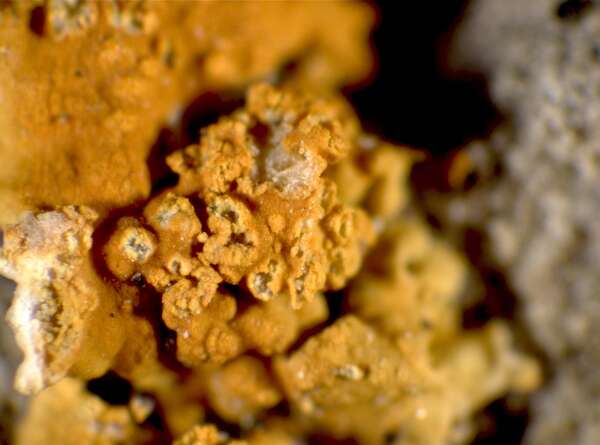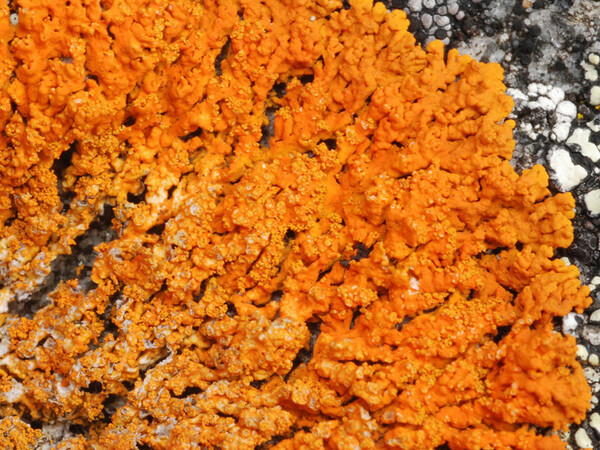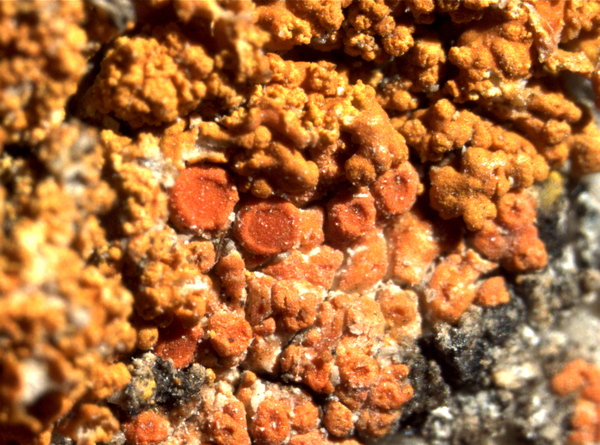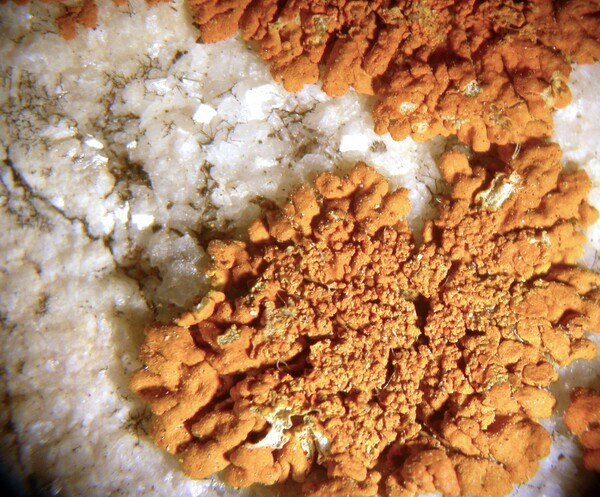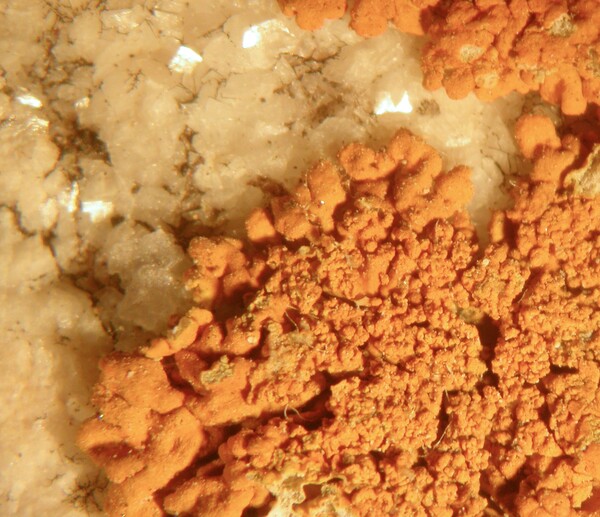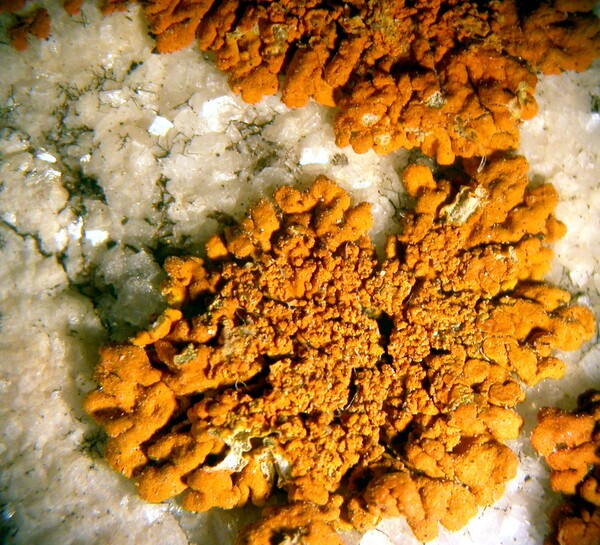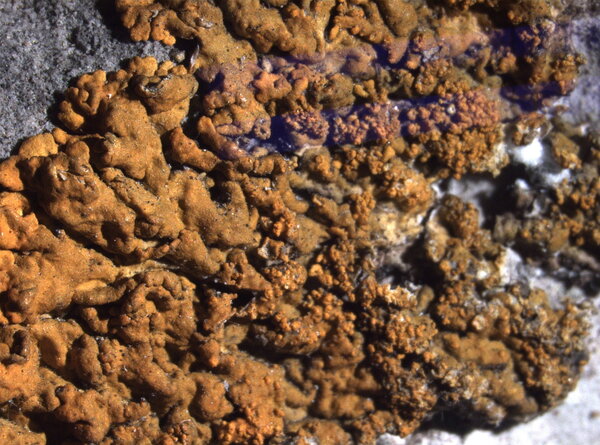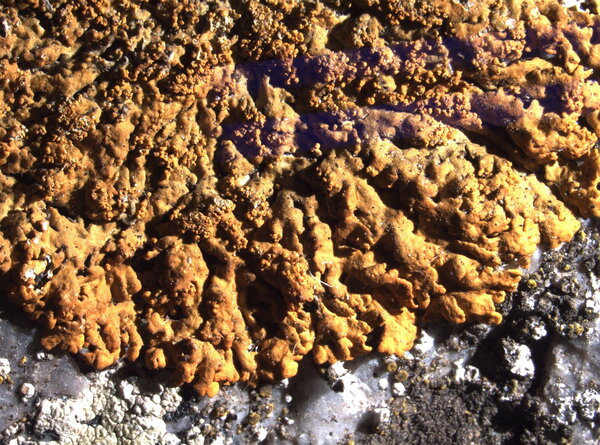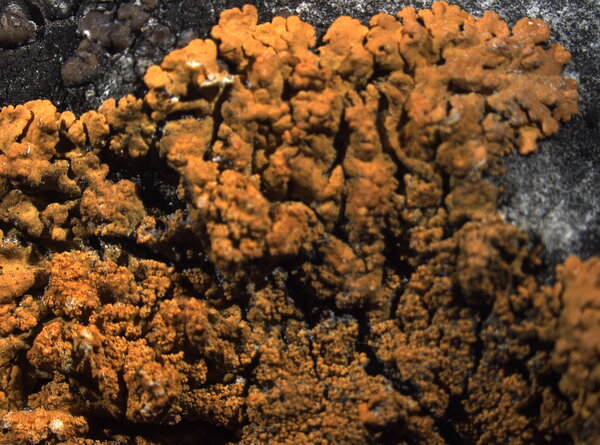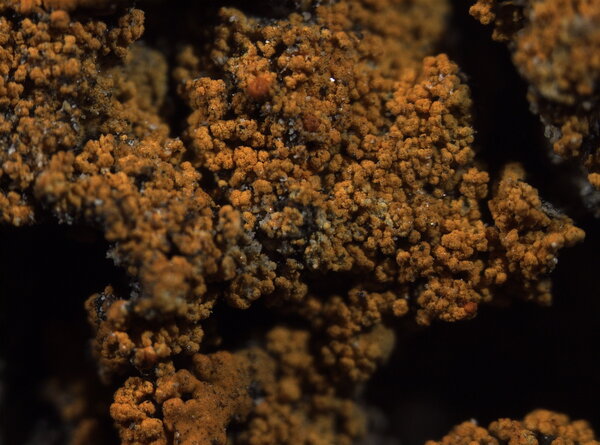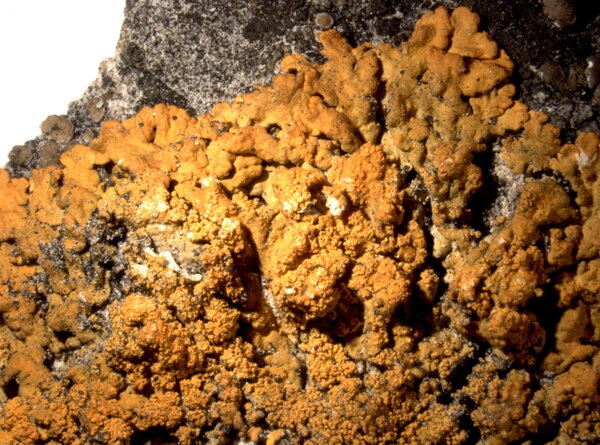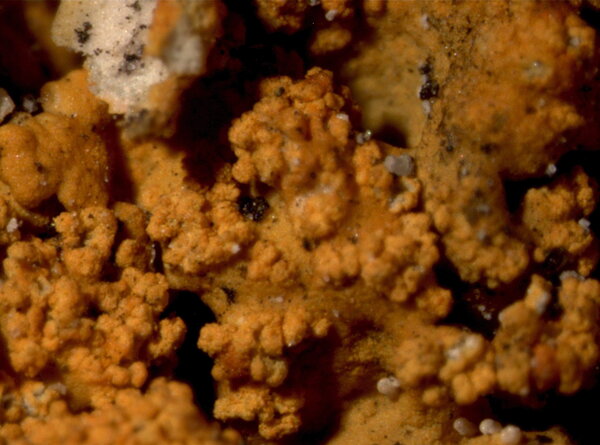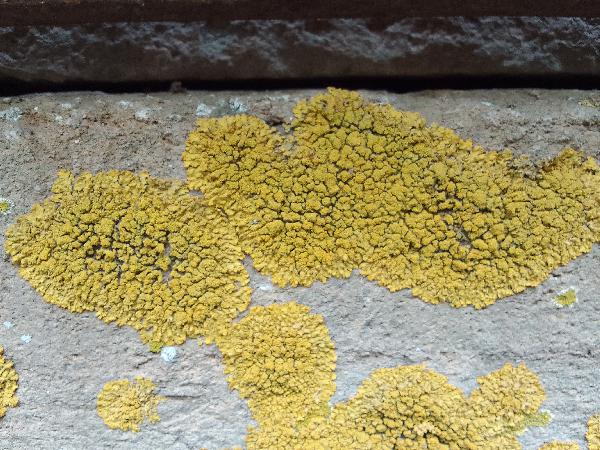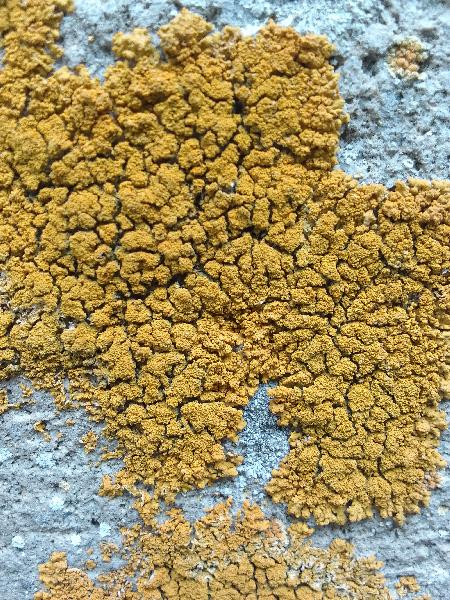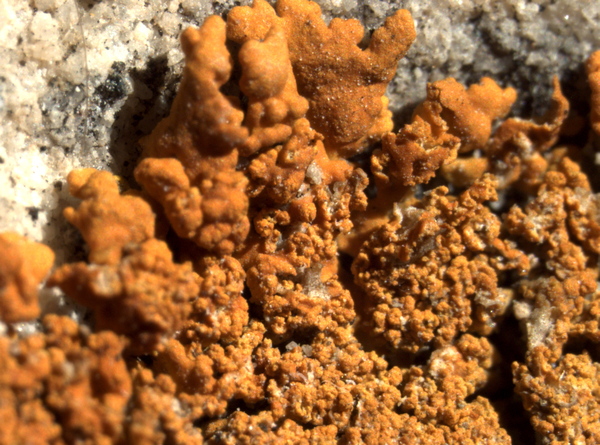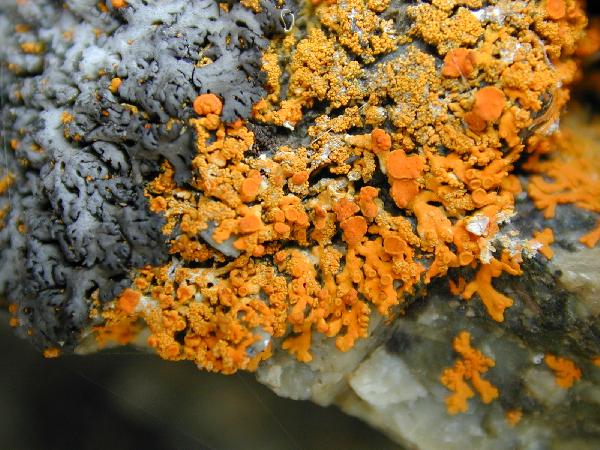Rusavskia sorediata (Vain.) S.Y. Kondr. & Kärnefelt
Ukrayins’kyi Bot. Zhurn., 60: 434, 2003. Basionym: Lecanora elegans var. sorediata Vain. - Meddeland. Soc. Fauna Fl. Fenn., 6: 143, 1881.
Synonyms: Caloplaca sorediata (Vain.) Du Rietz; Xanthoria elegans subsp. compacta (Nyl.) Clauzade & Cl. Roux; Xanthoria scandinavica B. de Lesd.; Xanthoria sorediata (Vain.) Poelt
Distribution: N - Frl, Ven (Nascimbene & Caniglia 1997, 2003c, Caniglia & al. 1999, Nascimbene 2005c, Nascimbene & Marini 2007), TAA (Nascimbene 2003, 2008b, Nascimbene & al. 2005, 2006, 2022, Spitale & Nascimbene 2012), Lomb, Piem (Isocrono & al. 2004, Morisi 2005, Isocrono & Piervittori 2008), VA (Isocrono & al. 2008, Favero-Longo & Piervittori 2009), Lig (TSB 33389). C - Umb (Ravera & Di Toma 2003, Ravera & al. 2006), Abr (Recchia & Villa 1996, Nimis & Tretiach 1999, Gheza & al. 2021), Mol (Ravera & Genovesi 2012, Genovesi & Ravera 2014).
Description: Thallus foliose to subcrustose-placodioid, heteromerous, dorsiventral, firmly attached, orange-yellow to bright orange-red, forming up to 3.5(-4) cm wide, often confluent rosettes. Lobes very short, flattened to convex, 0.4-1.2 mm wide, the tips 0.3-0.7 mm wide, rotund to truncate; central part of thallus subcrustose-areolate, with small, laminal pustule-like isidioid outgrowths breaking up into granular soredia; lower surface white, smooth or somewhat wrinkled, with a few extremely short, white hapters. Upper and lower cortex mesodermatous paraplectenchymatous, 10-20 µm thick; medulla white, rather loose. Apothecia lecanorine/zeorine, very rare, laminal, stipitate, up to 2 mm across, with an orange disc and a concolorous, smooth to crenulate margin. Epithecium orange-brown, K+ purple-red; hymenium colourless, 60-90 µm high; paraphyses simple or sparingly branched, septate, the apical cells swollen; hypothecium colourless to pale brown, 20-50 µm high. Asci 8-spored, clavate, functionally unitunicate, apically thickened with a broad internal beak, the inner part of apex and external cap I+ blue, Teloschistes-type. Ascospores 2-celled, polarilocular, hyaline, ellipsoid, 12-14 x 6-8.5 µm, the equatorial thickening (“septum”) 3-4 µm. Pycnidia common, immersed, slightly darker orange than the upper surface. Conidia ellipsoid, 2.2-3.3 x 1-1.5 µm. Photobiont chlorococcoid. Spot tests: thallus and apothecia K+ purple-red, C-, KC-, P-, UV+ intensely orange-red. Chemistry: parietin (major), fallacinal, emodin, teloschistin and parietinic acid, corresponding with chemosyndrome A of Søchting (1997).
Note: a mainly arctic-alpine, circumpolar species found on steeply inclined to rain-sheltered, nutrient-enriched surfaces of exposed calcareous or dolomitic boulders, sometimes also of basic siliceous rocks; most frequent in the Alps, where it can reach the nival belt, much rarer in the Apennines.
Growth form: Foliose, narrow lobed
Substrata: rocks
Photobiont: green algae other than Trentepohlia
Reproductive strategy: mainly asexual, by soredia, or soredia-like structures (e.g. blastidia)
Commonnes-rarity: (info)
Alpine belt: rather common
Subalpine belt: common
Oromediterranean belt: absent
Montane belt: very rare
Submediterranean belt: absent
Padanian area: absent
Humid submediterranean belt: absent
Humid mediterranean belt: absent
Dry mediterranean belt: absent
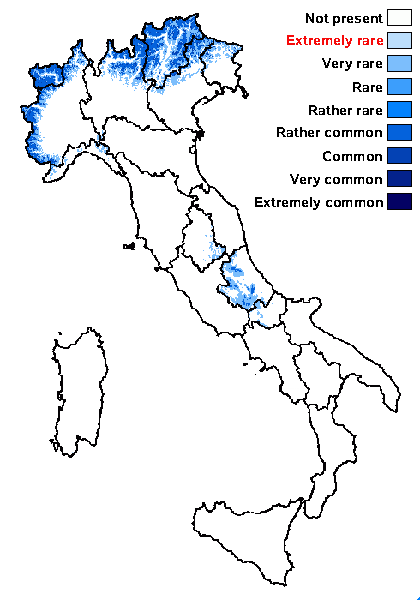
Predictive model
Herbarium samples
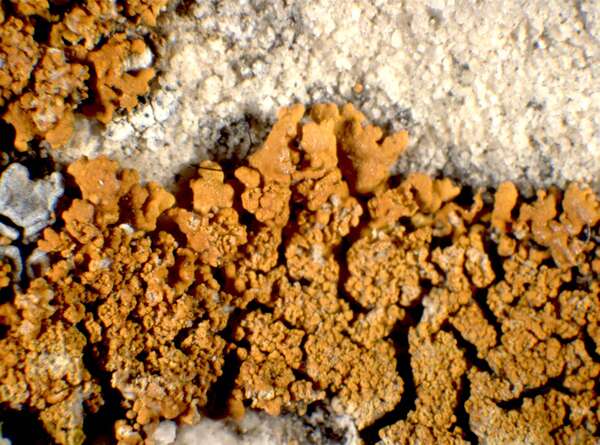

P.L. Nimis; Owner: Department of Life Sciences, University of Trieste
Herbarium: TSB (16912)
2001/12/03


P.L. Nimis; Owner: Department of Life Sciences, University of Trieste
Herbarium: TSB (35214)
2002/07/10
Growth form: Foliose, narrow lobed
Substrata: rocks
Photobiont: green algae other than Trentepohlia
Reproductive strategy: mainly asexual, by soredia, or soredia-like structures (e.g. blastidia)
Commonnes-rarity: (info)
Alpine belt: rather common
Subalpine belt: common
Oromediterranean belt: absent
Montane belt: very rare
Submediterranean belt: absent
Padanian area: absent
Humid submediterranean belt: absent
Humid mediterranean belt: absent
Dry mediterranean belt: absent

Predictive model
| Herbarium samples |


P.L. Nimis; Owner: Department of Life Sciences, University of Trieste
Herbarium: TSB (16912)
2001/12/03


 INDEX FUNGORUM
INDEX FUNGORUM
 GBIF
GBIF
 DOLICHENS
DOLICHENS

